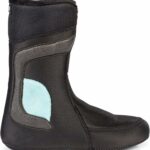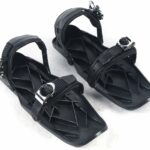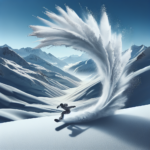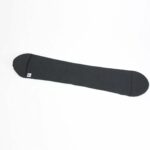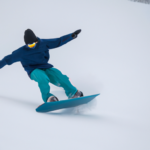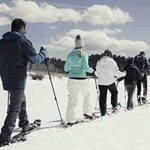Imagine yourself gliding down a mountain, fresh snow crunching under your board as you cut through the pristine winter landscape. Hone your skills and bring your snowboarding experience to a whole new level with heel toe snowboarding – an advanced technique that garners not just style points, but also greater control and precision. This article will arm you with the knowledge and tips you need to master the art of heel toe snowboarding, allowing you to enjoy this exhilarating winter sports in a way you’ve never imagined before.
Understanding the Basics of Snowboarding
Snowboarding is not just a sport; it’s a creative outlet, a mode of expression, and for many, it’s a way of life. Before you strap on your snowboard and hit the slopes, let’s get a firm understanding of the basics.
The Meaning of Heel Toe Snowboarding
Heel Toe Snowboarding refers to the essential technique that involves shifting your weight between your heel edge and your toe edge to control your direction and speed. When snowboarding, you’ll use the edges of your board to carve your path down the hill, turning by leaning towards your heels (heel edge) or your toes (toe edge).
Necessary Equipment for Heel Toe Snowboarding
Before you start heel toe snowboarding, ensure you have the right equipment: a suitable snowboard, snowboard boots, bindings, snowboarding helmet, goggles, and appropriate cold-weather attire. Your snowboard should be the right size for your height and weight, your boots should be comfortable and supportive, and your helmet and goggles should meet safety standards while ensuring clear visibility.
Safety Measures for Snowboarding
Your safety is paramount when snowboarding. Make sure you’re physically fit, as snowboarding requires good balance, reflexes, and agility. Take professional lessons if you’re a beginner, wear the proper safety equipment, stay within marked trail limits, and always consider the weather and snow conditions.
Snowboarding Stance and Position
Now that you’re equipped and safety conscious, let’s discuss stance and body position.
Finding the Right Body Position
Proper posture is critical for control in snowboarding. Keep your body aligned with your snowboard, keep your knees slightly bent, lean into your turns, and always look in the direction you’re planning to go.
Proper Foot Stance
Your foot placement greatly affects your snowboarding performance. Your lead foot (typically the left foot for right-handed people) should be positioned towards the front of the board. The width between your feet should be slightly more than your shoulder-width apart.
Bodyweight Distribution
Weight distribution is vital in steering your snowboard. Distribute your weight evenly over both feet when you’re on a flat terrain. When making a heel-side turn, shift your weight to your heels. Conversely, shift your weight forward onto your toes when making a toe-side turn.
Heel Edge Basics
Mastering the heel edge technique is a fundamental part of snowboarding.
Understanding Heel Edge
This refers to the edge of your snowboard that runs parallel to your heel. Leaning back on your heel edge creates a force that turns your snowboard downhill.
Techniques for Engaging Heel Edge
To engage your heel edge, begin by bending your knees and sitting down slightly. Your shin should apply pressure to the tongue of your boot. Dig your heels down into the snow, and your board will then start to slide downhill.
Common Mistakes while Using Heel Edge
Common mistakes while using heel edge include standing up too straight, not leaning back enough, or letting your body alignment drift off from parallel with your board. Remember to keep your knees bent, lean back, and keep your body aligned with your board.
Toe Edge Basics
Understanding and mastering the toe edge technique are just as important as the heel edge.
Understanding Toe Edge
The toe edge is the side of your snowboard that runs parallel to your toes. By leaning towards your toe edge, you create a force that turns your snowboard downhill in the opposing direction to your heel edge.
Techniques for Engaging Toe Edge
To use the toe edge, bend your knees and push your shins into the tongues of your boots, tilt your body forward, and push down onto your toe edge. Your board will then start to slide downhill.
Common Mistakes while Using Toe Edge
Common mistakes while using toe edge include leaning too far forward, not applying enough pressure to your toes, or letting your body alignment drift off from parallel with your board. Keep your body aligned with your board, lean forward, but not excessively, and remember to apply pressure to your toes.
Heel to Toe Transition
Transitioning smoothly from heel to toe is an essential snowboarding skill.
Steps to Transition from Heel to Toe
To transition from heel to toe, start by flattening your board and shifting your gaze in the direction you want to go. Lean forward, press your knees into the front of your boots, and push down onto your toe edge. You should feel your board start to carve a new path downhill.
Difficulty Level of Heel to Toe Transition
The transition from heel to toe can be challenging for beginners. It may feel unnatural or scary, but with practice, you’ll get the hang of it. Keep practicing, and remember to have patience with yourself.
Practicing Heel to Toe Transition
The best advice for practicing heel to toe transition is repetition. Find a comfortable slope, make sure there’s plenty of room for you to maneuver, and practice your transitions over and over. With each repetition, your technique will get smoother and more efficient.
Toe to Heel Transition
Just like transitioning from heel to toe, transitioning from toe to heel is a crucial skill.
Steps to Transition from Toe to Heel
To transition from toe to heel, start by flattening your board and looking in the direction you want to go. Lean back, push your hips out slightly, and press onto your heel edge. Your board will begin to move in the new direction.
Difficulty Level of Toe to Heel Transition
Just like transitioning from heel to toe, transitioning from toe to heel can feel a bit unnatural for beginners. It’s okay to struggle initially. With time and practice, it will start feeling more comfortable.
Practicing Toe to Heel Transition
Again, practice makes perfect. Pick a gentle slope and practice your transitions over and over. Soon enough, your moves will become second nature.
Building up Speed
Speed comes with confidence and comfort in snowboarding. But remember, your goal is safe and controlled speed.
Methods to Gain Momentum
The most straightforward way to build momentum is to bend your knees and lean forward slightly. Incline the nose of your board downhill and let gravity do its part.
Building Speed Effectively
Keep your body aligned with the board and stay centered. Practice smooth transitions, maintaining a slight forward lean to keep momentum without losing control.
Avoiding Excessive Speed
Remember to use your edges to control and adjust your speed. If you find yourself going too fast, engage your heel or toe edge to slow down or stop.
Advanced Snowboarding Techniques
Once you’ve mastered the basics, you can move on to more advanced techniques.
Carving Techniques
Carving involves shifting your weight from your front foot to your back foot while simultaneously engaging your edges. This allows for sharper and more controlled turns.
Jumping Techniques
Jumping techniques encompass a variety of tricks, from the basic ollie to more complex aerial maneuvers. Before attempting jumps, ensure you’re comfortable with your basics, and preferably do so under the guidance of a professional instructor.
Sliding Techniques
Slides involve sliding your snowboard sideways along with an object, such as a rail or box. They require good balance, control, and precision.
Improving Heel Toe Snowboarding Skills
Improving your heel toe snowboarding skills requires patience, repetition, and dedication.
Frequent Practice
The more you do something, the better you get at it. Snowboarding is no exception. Being consistent with your practice can help to improve your skills exponentially.
Taking Professional Lessons
Amateurs teach amateurs to be amateurs. Professionals teach you to be professionals. Taking lessons from a professional instructor can significantly improve your snowboarding skills, as they can provide valuable insight, corrections, and techniques.
Watching and Learning from Advanced Snowboarders
Watching and learning from advanced snowboarders can also improve your skills. Noticing how they position their bodies, how they use their edges, and how they transition can show you what to strive for in your practice.
Snowboarding Safety Precautions
Staying safe on the slopes should always be your number one priority.
Proper Equipment Maintenance
Your equipment needs to be in top condition for optimal performance and safety. Regularly inspect and maintain your board, bindings, and boots.
Importance of Safety Gear
No matter how skilled you are, always wear safety gear. This includes a quality snowboarding helmet, goggles, and appropriate padding.
Knowing When to Rest and Recuperate
Rest is just as important as practice. Know when to take breaks, and give your body time to heal and recuperate after challenging or dangerous rides.
- What Snowboard Bindings Should I Get? - January 23, 2024
- What Size Screws For Snowboard Bindings? - January 23, 2024
- How To Snowmobile On Water? - January 23, 2024

